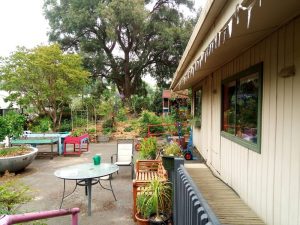Kevin Heinze GROW
Gardening for Recreation, Occupation and Wellbeing
In February 2020, Judy Vizzari interviewed Georgia Tracy from Kevin Heinze GROW in Doncaster.
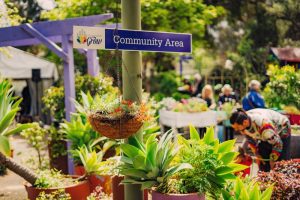 In the mid-eighties, I met an ‘evergreen’ man. He was heavy and strong, a man with large hands and feet. I remember that his eyes (his left was blind) were soft and dark and that he seemed a gentle man. His name was Kevin Heinze.
In the mid-eighties, I met an ‘evergreen’ man. He was heavy and strong, a man with large hands and feet. I remember that his eyes (his left was blind) were soft and dark and that he seemed a gentle man. His name was Kevin Heinze.
“So what?” you ask. Well, so did he … often. Sow What? was the name of his weekly half hour ABC gardening program which aired from the late 1960s to the mid-1980s. Every week I would sit, glued to the screen of our black and white television, determined not to miss one session of my home-based learning. Kevin drew me into my garden, encouraged me to grow fruit and vegetables and to enjoy his outdoors. Those lessons were unforgettable building blocks.
So what happened to Kevin?
From his early start as a gardener he progressed and became a popular television presenter, radio talk-back personality and writer. Today, 11 years after his death, his legacy continues to grow.
Kevin’s contribution to his community was his love and knowledge of gardening, with his special gift being the way he was able to employ gardening as a life enhancer for so many people. Great examples of this gift are the Kevin Heinze GROW centres in Doncaster and Coburg – facilities which provide therapeutic horticulture and other programs for people with disabilities or mental health conditions.
Today I’m visiting one of Kevin’s centres – the GROW Centre in Doncaster
It’s at 39 Wetherby Road on the right hand side as you head down to Box Hill and it’s very easy to miss. High fences are interrupted by two large open gates and an unsurfaced driveway which leads inside to car parking and shared spaces. On the left is a nursery and a Men’s Shed and, on the right, a building in a large garden contained by another high fence.
The building, clearly marked Office and Kevin Heinze GROW, is quite well worn. It comprises a series of rooms which form a straight line stretching back, rather like joined school portables, into the garden. Even from outside, I can see that that buildings’ inside walls are hung with artwork, notices and signage.
A friendly young woman invites me in
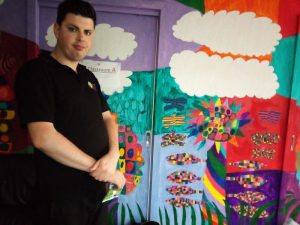 The first room has a large whiteboard and a table, big enough to seat 10 people. There are potted plants and a colourful mural by someone called Lukas (pictured). This is a meeting room and I’m told that morning meetings are run daily by the GROW participants and staff.
The first room has a large whiteboard and a table, big enough to seat 10 people. There are potted plants and a colourful mural by someone called Lukas (pictured). This is a meeting room and I’m told that morning meetings are run daily by the GROW participants and staff.
In the next room, large screens are mounted, possibly for structured learning. Further on, we pass through a kitchen room which serves for cooking and independent living sessions as well as for meals.
This place is colourful and as I walk through I effectively become part of the throng of program participants and their health specialists who work together to make this place their own several days each week.
Georgia Tracy is the Marketing & Fundraising Manager and my point of contact
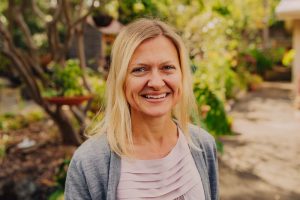 Georgia is in the last room. It’s an office with three employees present but places for four or five. She’s tells me that she’s been a member of the team here for six years, having started as a trainer working with participants in the garden and gradually taking on more responsibility. She now blends her part-time job with study and family. She’s bright and enthusiastic and eager to talk about the centre.
Georgia is in the last room. It’s an office with three employees present but places for four or five. She’s tells me that she’s been a member of the team here for six years, having started as a trainer working with participants in the garden and gradually taking on more responsibility. She now blends her part-time job with study and family. She’s bright and enthusiastic and eager to talk about the centre.
We wander outside to a ramp which runs along the front of the rooms and overlooks the garden. It’s a verdant scene with mature trees, gardening sheds, outdoor seating and a lovely ‘forest walk’. In the distance, I glimpse gardening plots, hothouses and potting sheds and I hear that there are therapy specific rotundas, chickens and compost boxes as well.
We start with a little history
Georgia tells me that, during the late ’70s, Kevin Heinze visited England and was inspired by a visit to a garden for children with disabilities. He returned with the belief that people with disabilities would benefit from horticulture-based therapy and decided to introduce a similar project here. So he worked with the volunteers from the local Kiwanis Club of Doncaster & Templestowe to raise funds and, with the cooperation of the then Doncaster/Templestowe Council (now Manningham Council), secured a lease on the current site. It was an unusual project and would have required great persuasive effort to encourage interest, I think.
Georgia says that Kevin’s initiative has never faltered. There are now around 60 participants, some referred through the NDIS and others by medical professionals. A similar number of qualified allied health professionals and horticulturists tailor a range of courses including TAFE programs – Transition Education and Work Education post-school life skills, numeracy and literacy skills, independence and social skills and person specific goals.
The centre is a registered ACFE provider and also offers NDIS GROW On (its ‘core program’), GROW ON Transition (for secondary school students), Grow Well (for children who have experienced trauma), CHSP (a Commonwealth Home Support Program for older people with an interest in social and recreational gardening), and a range of clinical services such as OT, speech therapy and counselling.
A place to grow
 Georgia is keen to tell explain that, as Kevin Heinze predicted, gardening promotes participants’ strength and coordination whilst also building independence, pride and a sense of belonging. She’s enthusiastic about the progress that GROW participants make and cites some examples.
Georgia is keen to tell explain that, as Kevin Heinze predicted, gardening promotes participants’ strength and coordination whilst also building independence, pride and a sense of belonging. She’s enthusiastic about the progress that GROW participants make and cites some examples.
One course occurred through the donation to the centre of a vehicle from the Bendigo Bank. Now a team of three young people offer their supervised services to the local community for garden maintenance (Grow on the Go Gardening Services), thus developing their work skills and self-confidence. The results? They have become independent workers, ready to fulfil meaningful roles in the wider community.
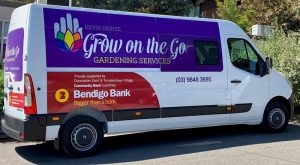 Another program still in its infancy is called HenPower. Recently three chickens were hatched and a coop and chicken run built for them within the ‘forest’ near a decorative pond. GROW participants are learning to care for their feathered charges and, in time, they will invite visitors from aged-care facilities to engage in facilitated interactions with the flock. This fun project will potentially have many benefits for both the HenPower team and those visiting from aged-care facilities. A similar pet-therapy program in the UK has had excellent clinical outcomes for people suffering from social isolation, loneliness, depression and age-related mental health conditions.
Another program still in its infancy is called HenPower. Recently three chickens were hatched and a coop and chicken run built for them within the ‘forest’ near a decorative pond. GROW participants are learning to care for their feathered charges and, in time, they will invite visitors from aged-care facilities to engage in facilitated interactions with the flock. This fun project will potentially have many benefits for both the HenPower team and those visiting from aged-care facilities. A similar pet-therapy program in the UK has had excellent clinical outcomes for people suffering from social isolation, loneliness, depression and age-related mental health conditions.
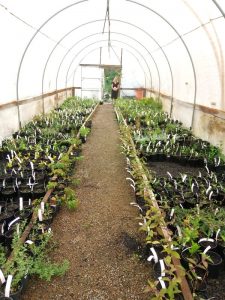 Not too far from the chicken run is a platform suspended several centimetres above the earth by ropes attached to two trees. Georgia tells me that it’s a gentle swing which supports participants plus, in some cases, their mobility equipment. She says that it’s particularly soothing for autistic clients.
Not too far from the chicken run is a platform suspended several centimetres above the earth by ropes attached to two trees. Georgia tells me that it’s a gentle swing which supports participants plus, in some cases, their mobility equipment. She says that it’s particularly soothing for autistic clients.
Horticultural experience plays a large role in GROW participants’ learning and socialising programs which incorporate outside themes in ‘indoors’ projects like cooking, literacy or numeracy sessions. Each participant works within their range of skills and interests and maintenance of this large, productive space is shared by the participants, staff and KHG volunteers. All staff are required to spend time each week in this green space … not a hard ask!
The nursery
When I arrived, I noticed the nursery to my left – it’s time to see what’s there. It’s large (around half an acre) and, as well as rows of plants neatly lined, there’s a hothouse and a small blue shed. It seems that it’s a commercial nursery, open to the public and selling a wide variety of 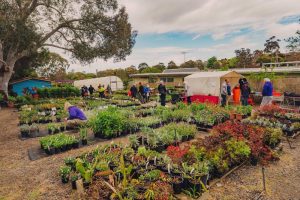 plants including vegetables, exotics, natives, climbers, bushes and trees, all looking healthy and reasonably priced.
plants including vegetables, exotics, natives, climbers, bushes and trees, all looking healthy and reasonably priced.
The supervised gardening is done by the participants, who also help with sales. Proceeds are channelled back into the centre. This place is a wonderful resource for the general community, well worth visiting next time you’re looking for a citrus tree, an unusual succulent or an exotic climber.
GROWing by FUNdraising … the Autumn Festival
It’s easy to put ‘good places to visit’ onto a ‘list of things to do’ and, if you’re like me, the list becomes very long and is inclined to drop items off the end. The Kevin Heinze GROW centre is a 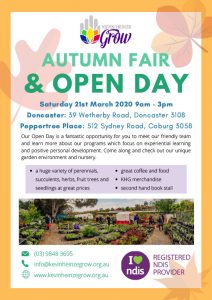 ‘good visit’ and I encourage you to check out their nursery which is open to the public 6 days per week (Monday-Friday 9am–3pm and Saturday 8.30am-12.30pm) and support their valuable work.
‘good visit’ and I encourage you to check out their nursery which is open to the public 6 days per week (Monday-Friday 9am–3pm and Saturday 8.30am-12.30pm) and support their valuable work.
You can also visit them on Saturday, 21st March between 9am and 3pm to enjoy their Annual Autumn Fair and Open Day. It’s an opportunity to meet their staff, to learn about their programs and to see their garden and nursery. The Open Day will be happening at both their Doncaster (39 Wetherby Road) and Coburg (512 Sydney Road) sites.
A final word
Through the efforts of so many committed people including a voluntary Committee of Management, Manningham Council’s long standing land leasing arrangement, fundraising initiatives, contributions from participants’ families, fundraising activities (including the Open Days) and the work of many community volunteers, the centre has continued to grow and last year they celebrated their 40th birthday.
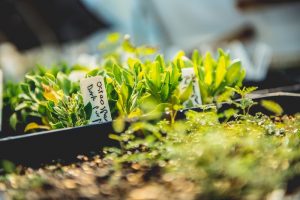 But it’s needs are many, so please consider buying from their nurseries, either on their Open Days or at any other time.
But it’s needs are many, so please consider buying from their nurseries, either on their Open Days or at any other time.
Kevin Heinze Grow is also a registered charity and welcomes donations or bequests of any size to support their work and the continuation of Kevin’s legacy. You can donate by visiting their website or by calling them on 9848 3695 or by emailing them at donate@kevinheinzegrow.org.au.

